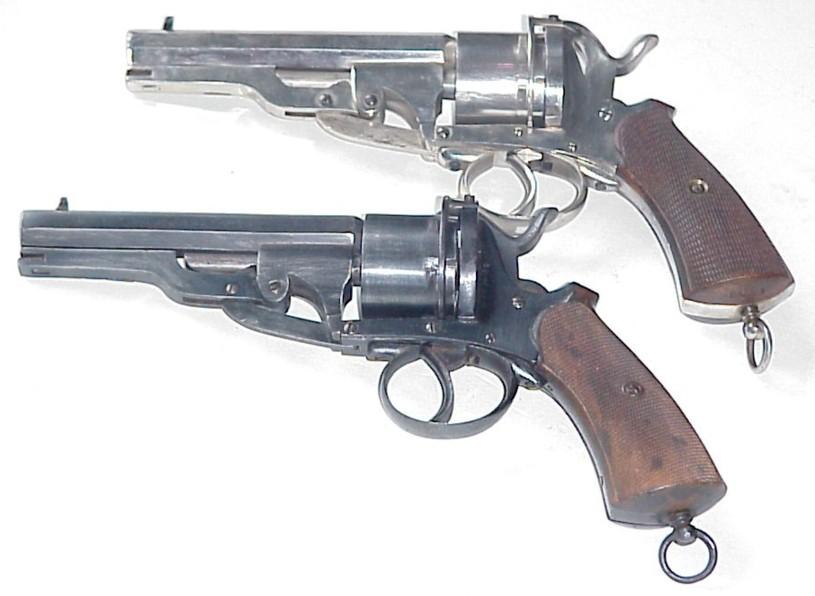Some of the most beautiful work of this craftsman, and many others, are in this book “Liège Gunmakers through their Work. 1800 - 1950”.
For more detail see: LIEGE GUNMAKERS
Degueldre Constant Joseph
It is here about a revolver with loading by the front of the cylinder since he is stopped with the back. DEGUELDRE invented a cartridge without casing especially for this weapon (Patent 016093 of the 26.04.1864). The weapon is provided with a rammer what accredits the thesis of the loading by the front of the cylinder. This one full, i.e. is not grooved and with six rooms. It unscrews of the barrel by the central screw which crosses it. That thus facilitates the loading of the balls without very particular casings. The hammer is equipped with a flat and enough broad strikers to correspond to broad “the notches” of the cylinder! The stick consists of two plates of walnut squared and whose higher end is carved of a floral reason.
The weapon at first sight does not carry of only one punch of the proofhouse of LIEGE, namely K crowned.
This punch is the countermark of the controller, of use of 1853 to 1877.
The weapon also carries the mark DEGUELDRE BREVETE (PATENTS) which should correspond to patent 015950 of the 30.03.1864.
DEGUELDRE Constant Joseph, born the 11.01.1825, was a manufacturer of weapons with SAINT-REMY (province of Liege-Belgium) He is the author of three patents to knowing the two cities above and later the 31.12.1883 bearing the n° 63770 and which relates to a system of revolver with double closing. It would be deceased the 18.04.1899.
He goes without saying that this system of ammunition did not have the success discounted among the users and that these weapons should amount on the fingers of a hand!
Appendices: Patents 015950 and 016093.
GG
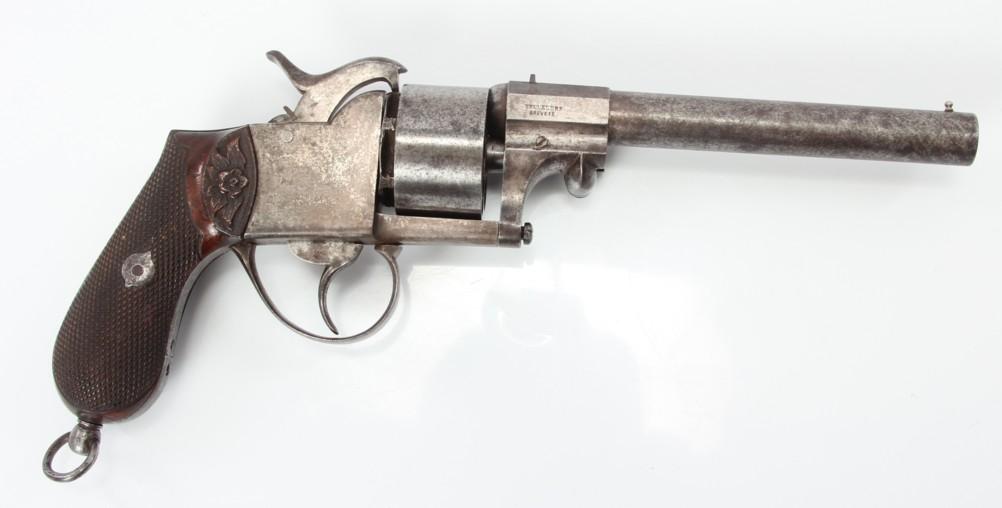
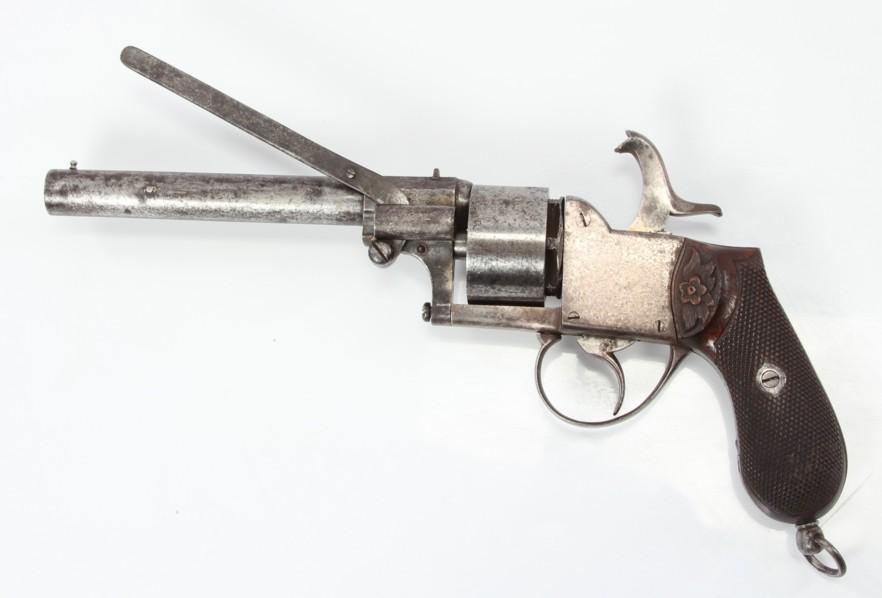
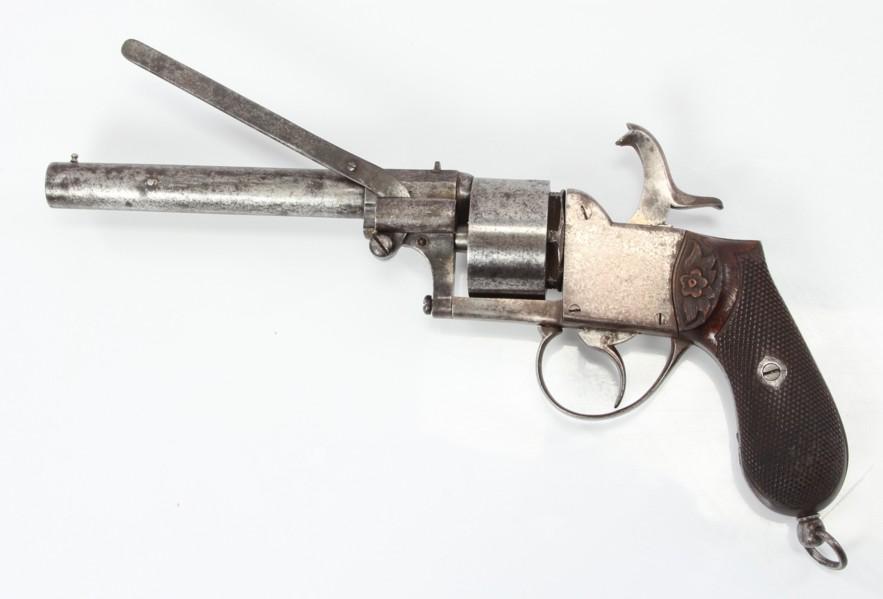
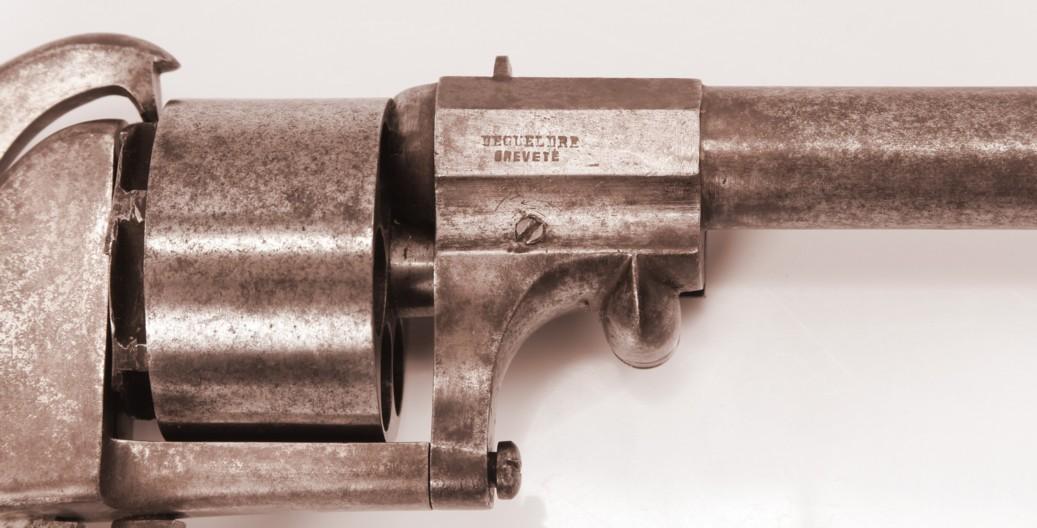
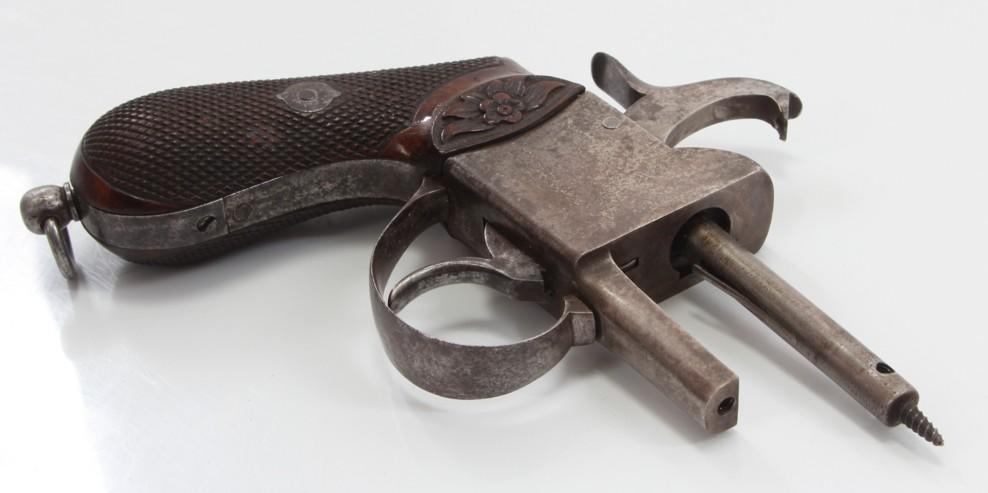
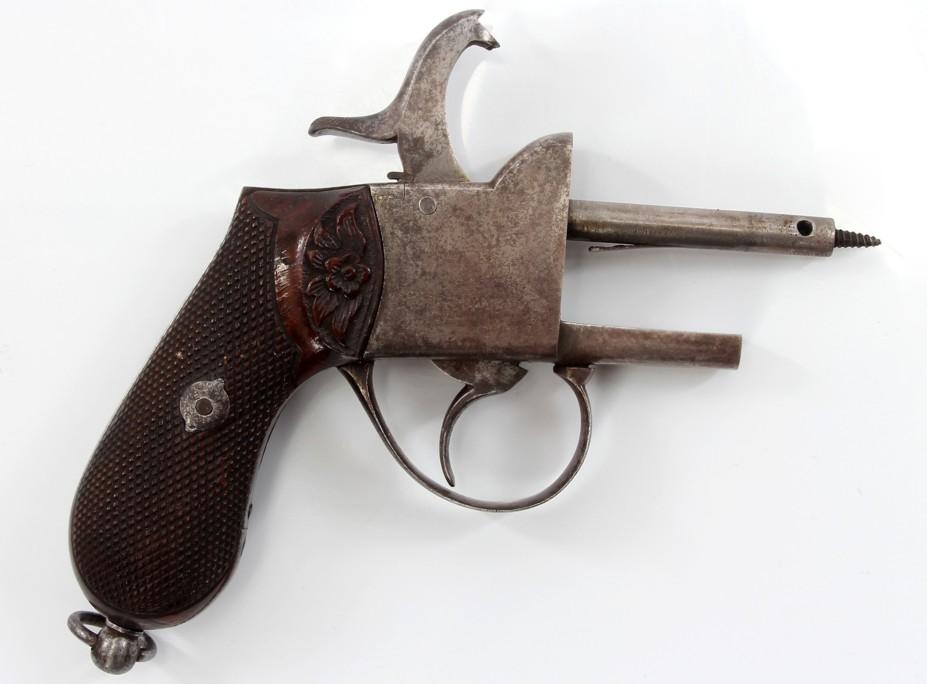
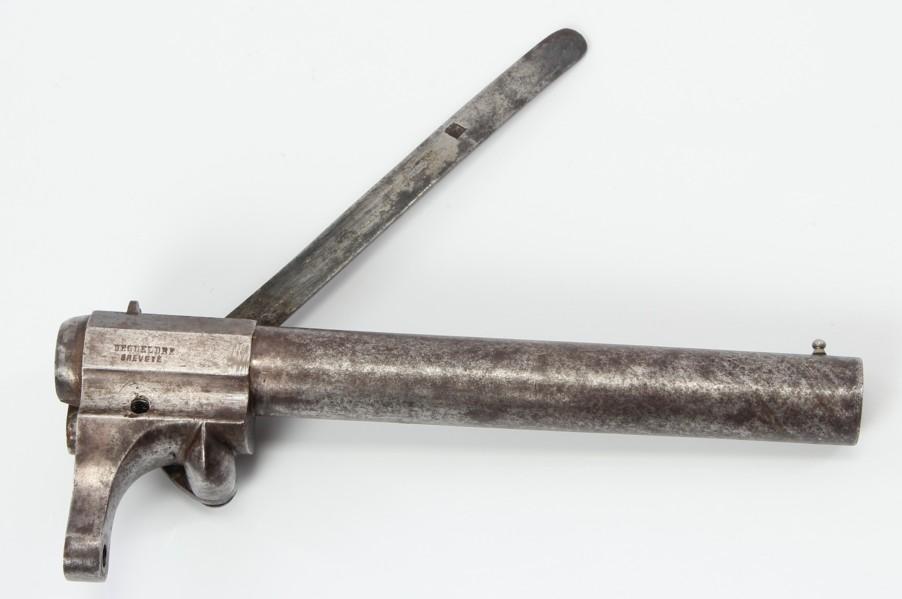
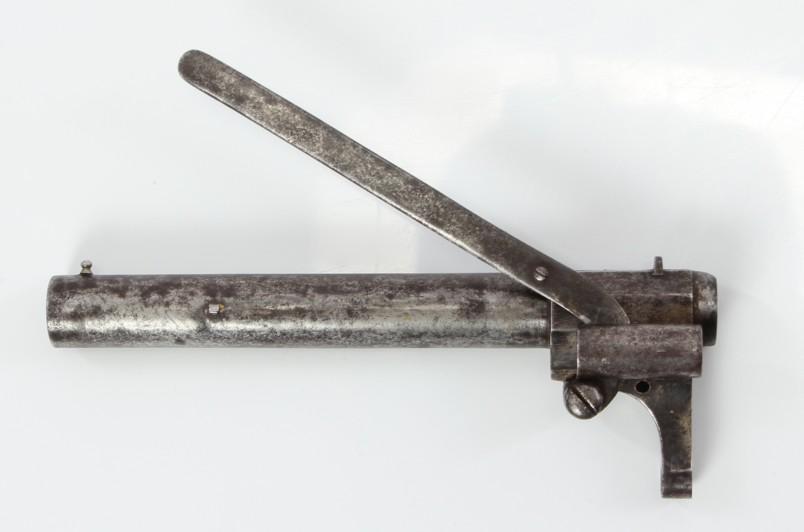
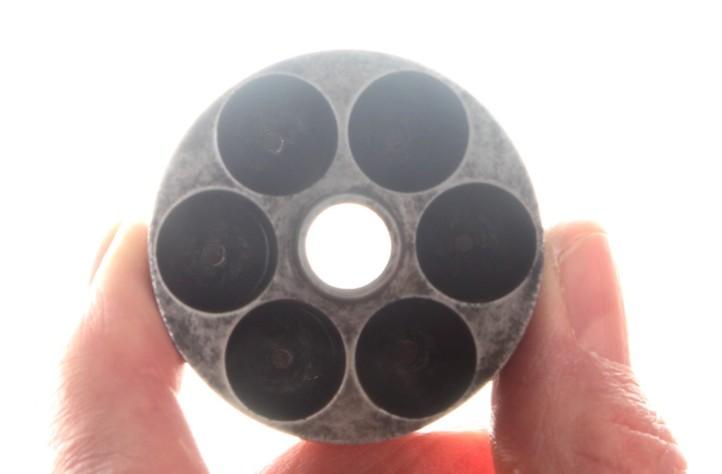

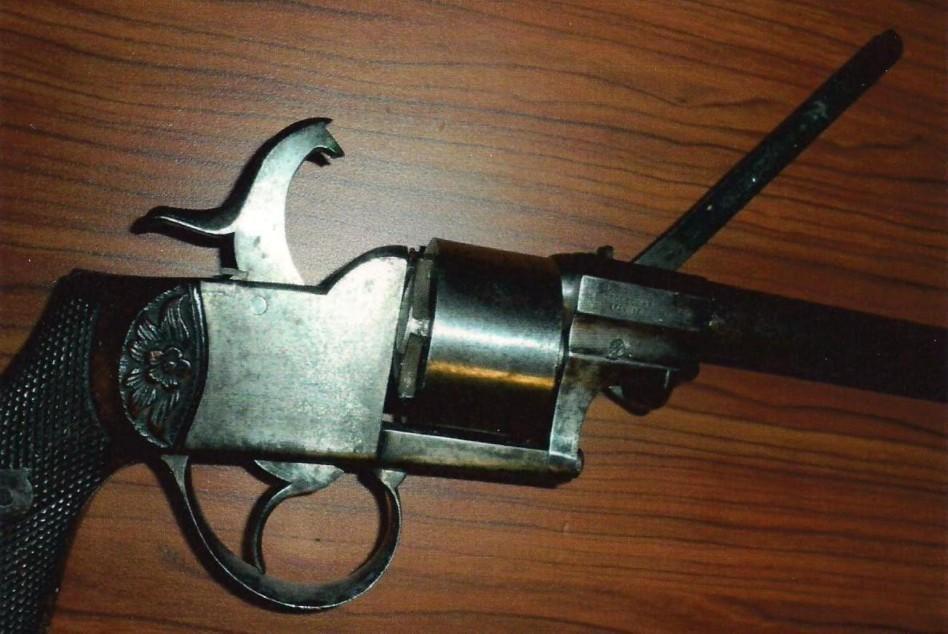
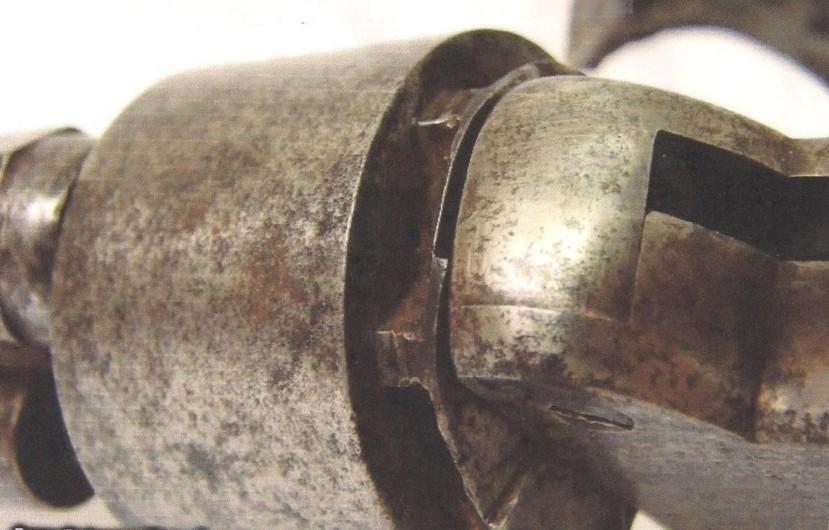
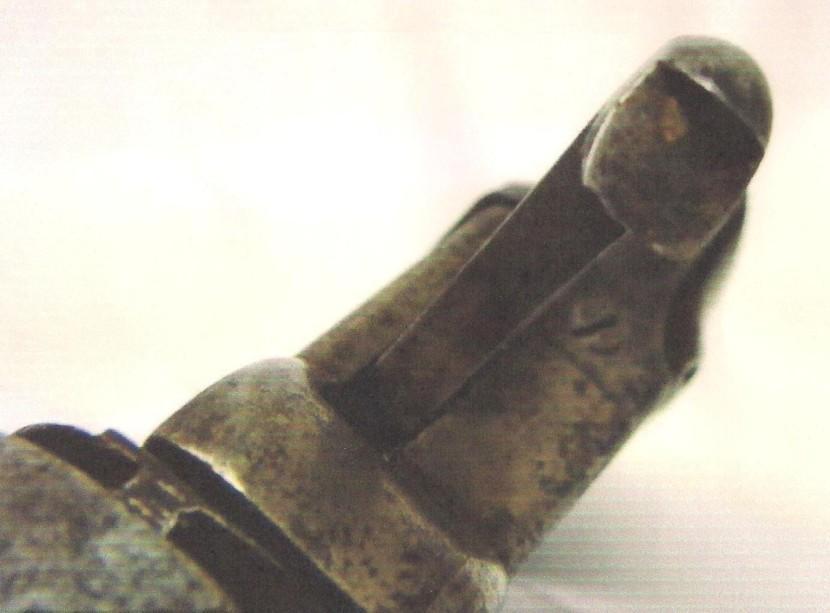
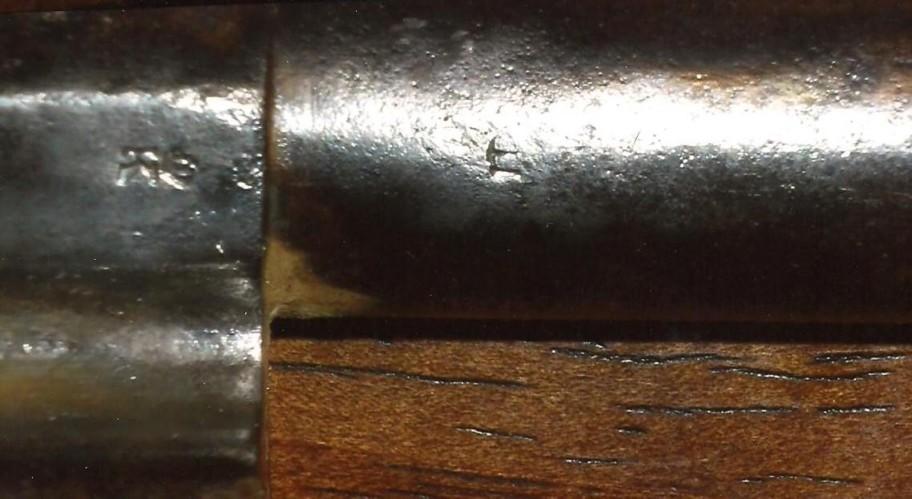
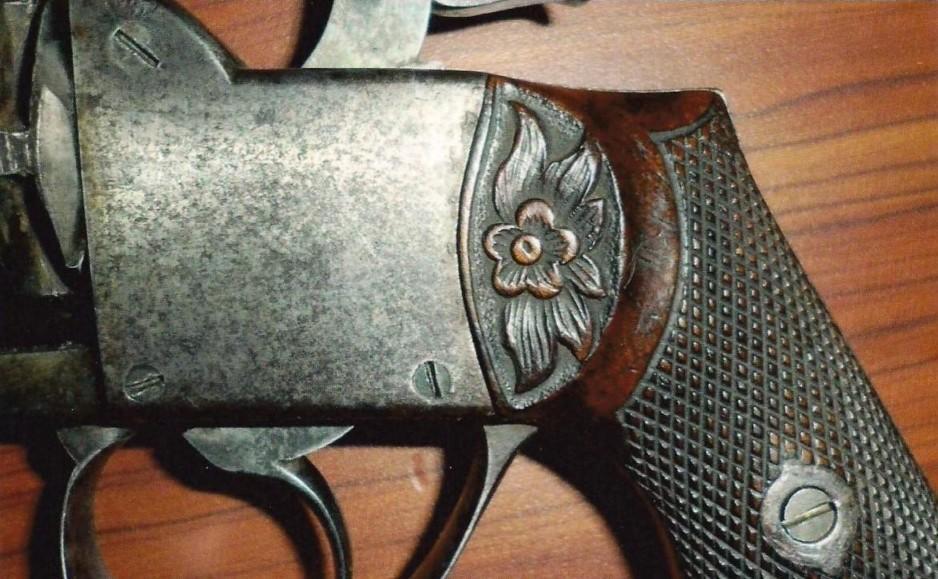
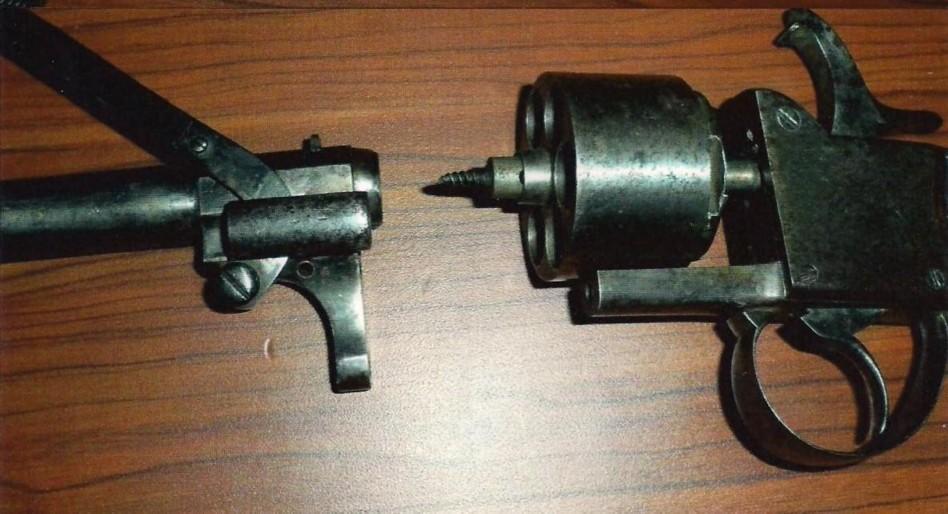
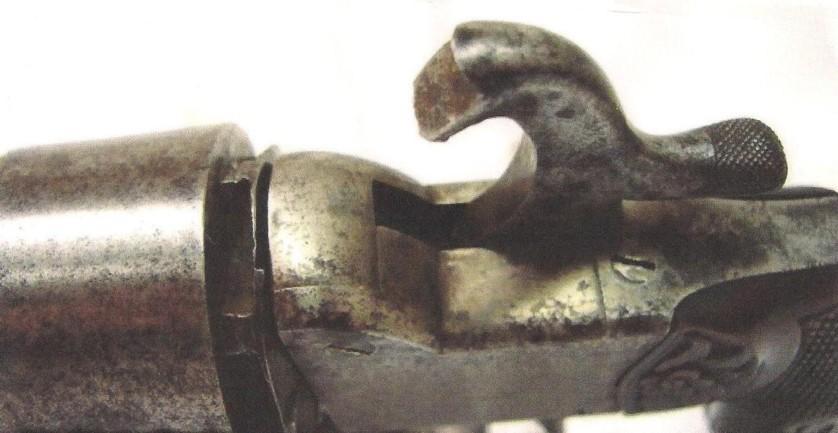
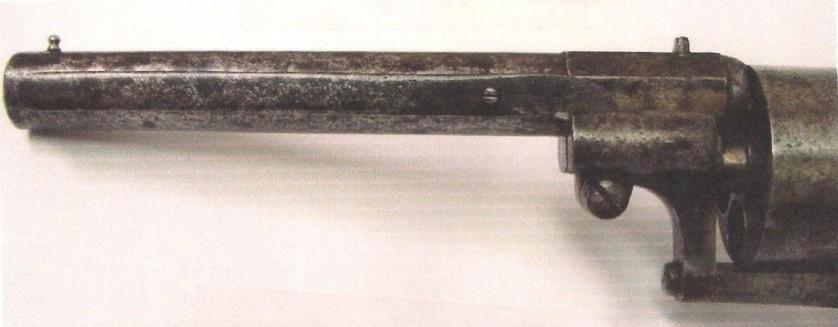
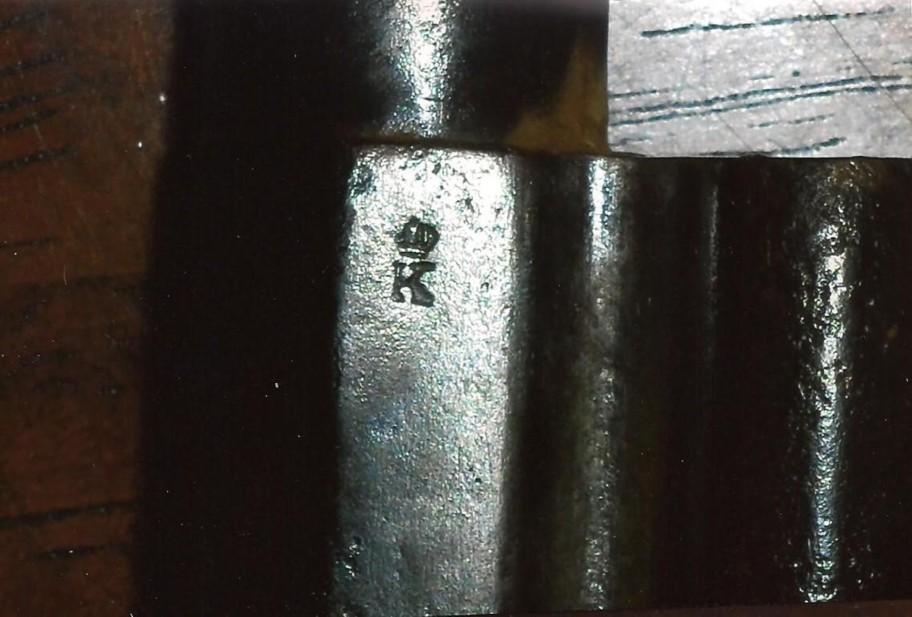
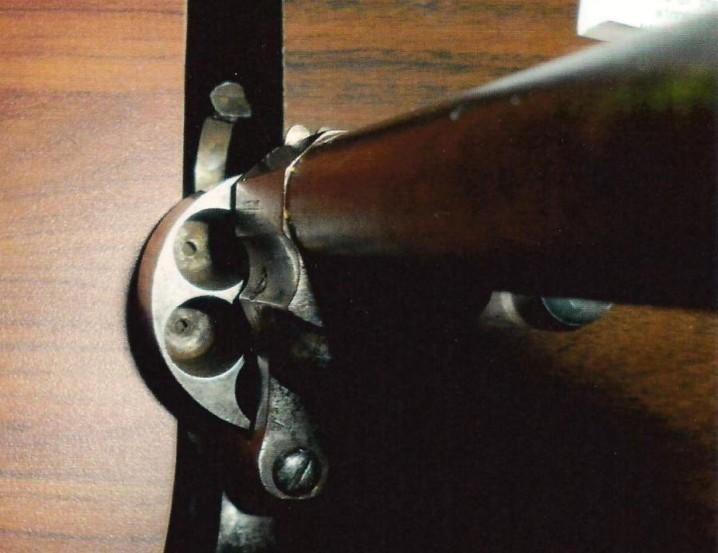
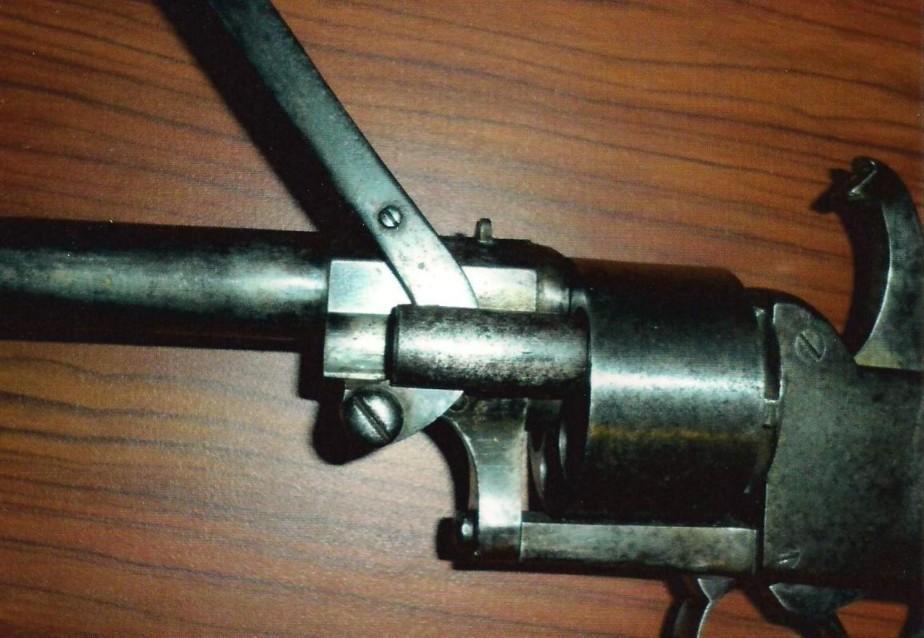
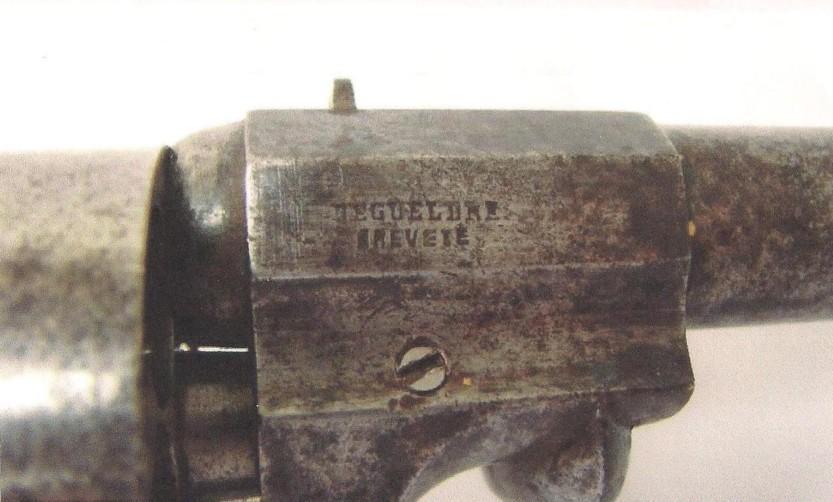
Patent 015950
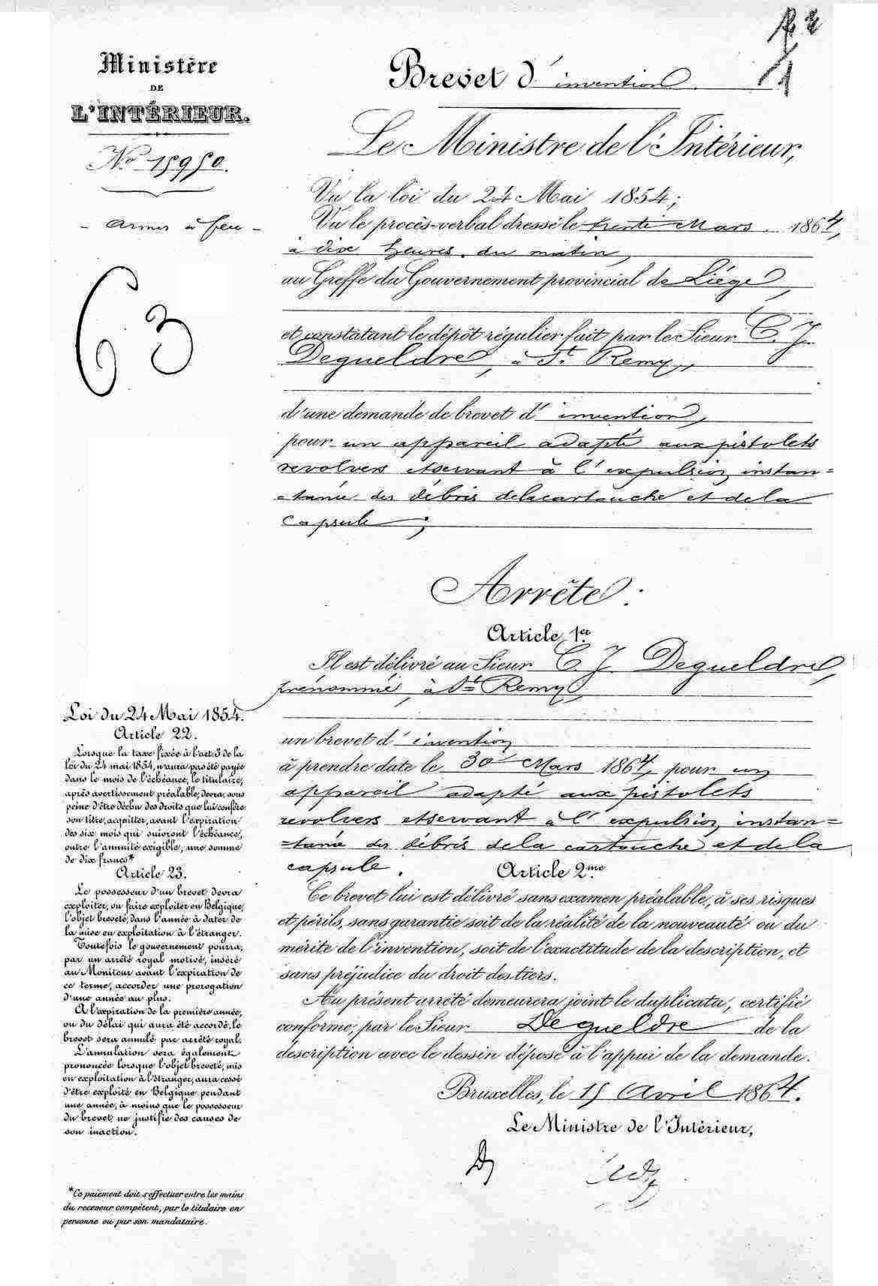
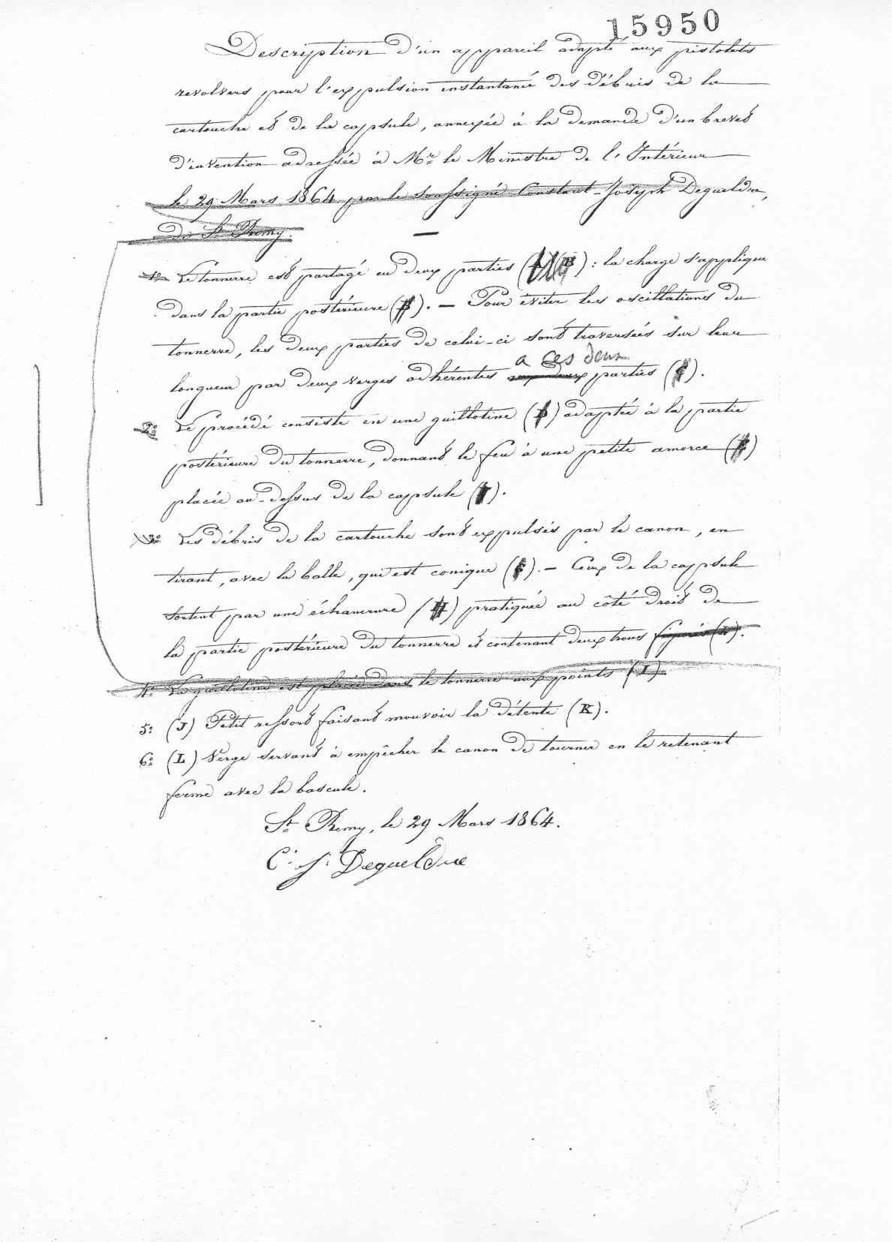
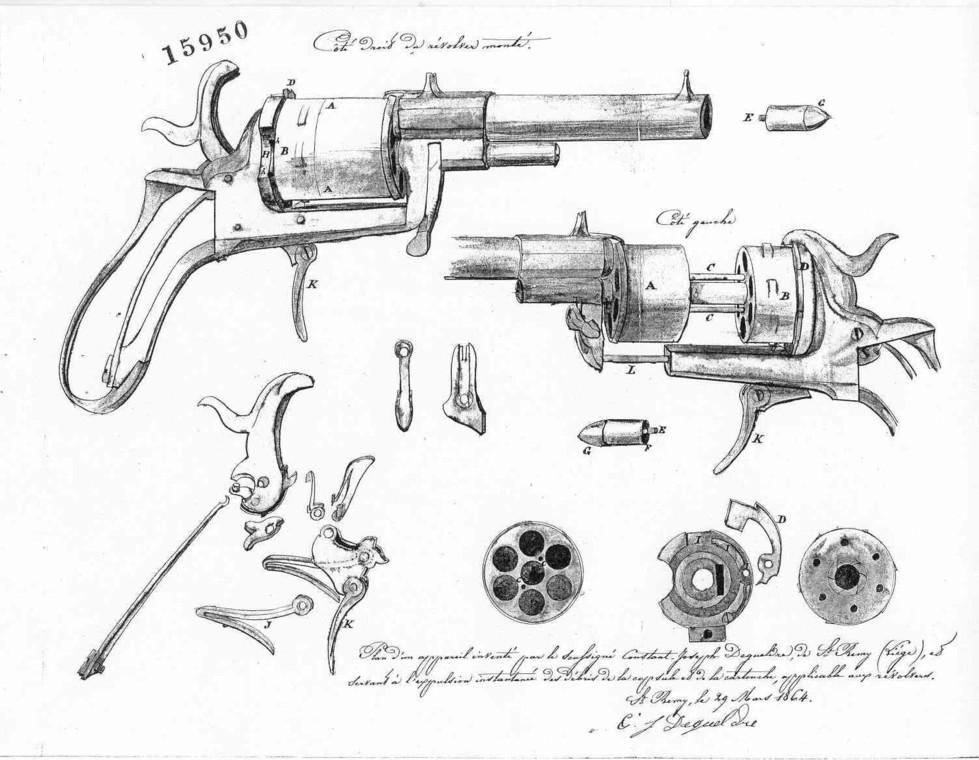
Patent 016093
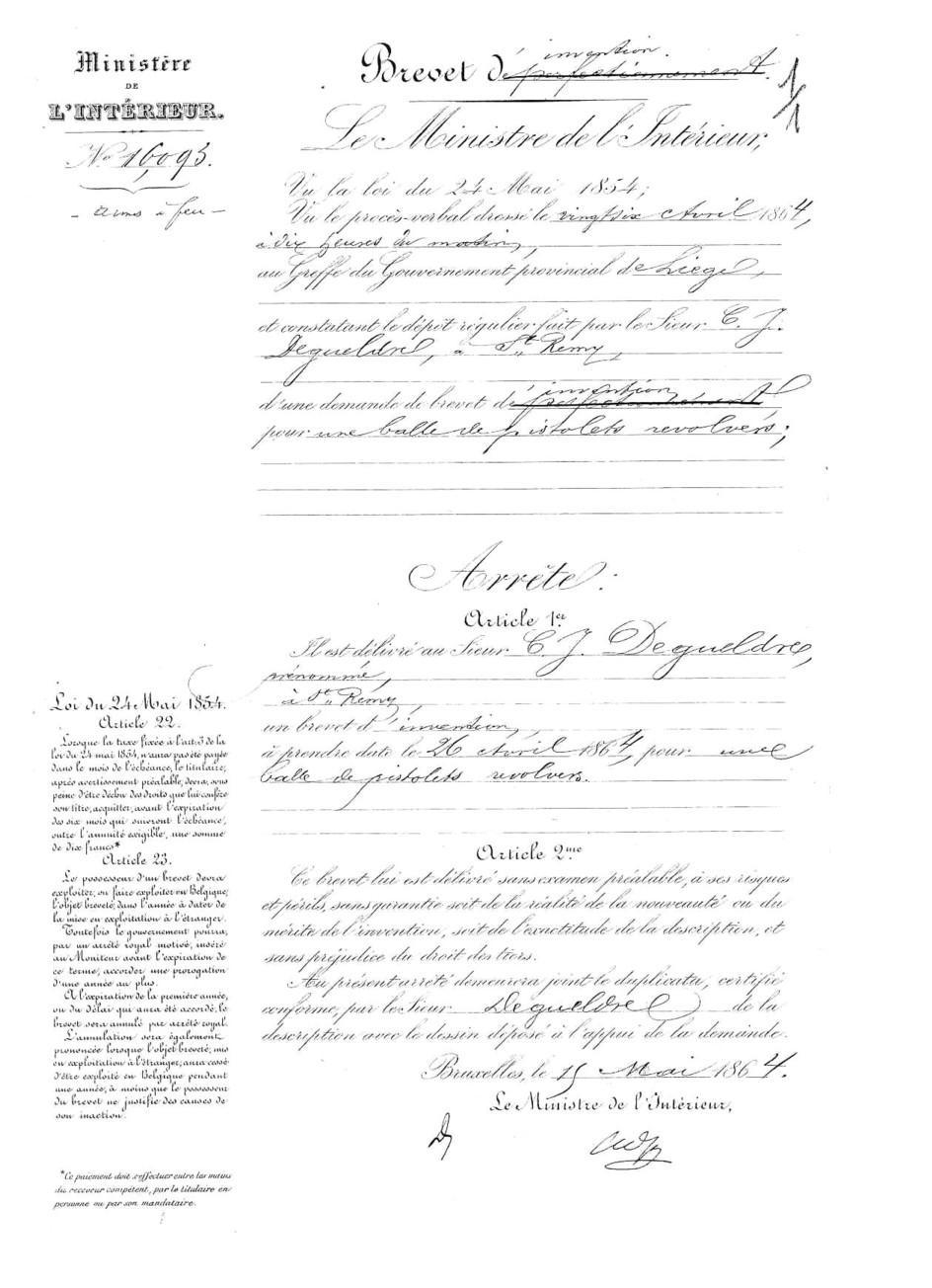
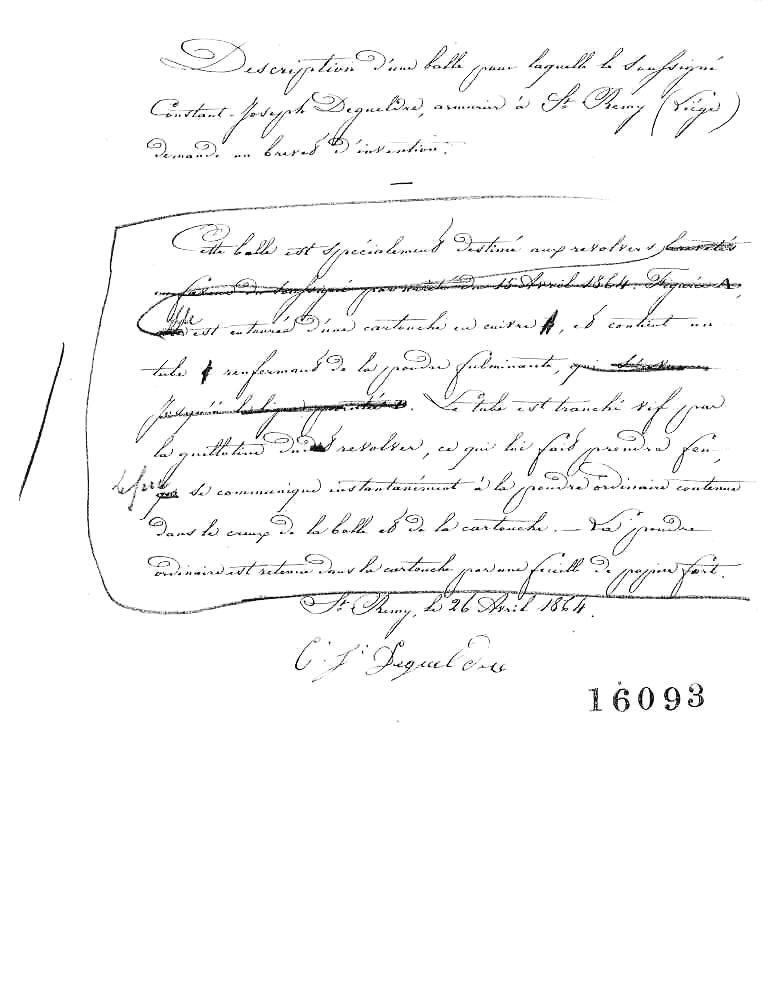
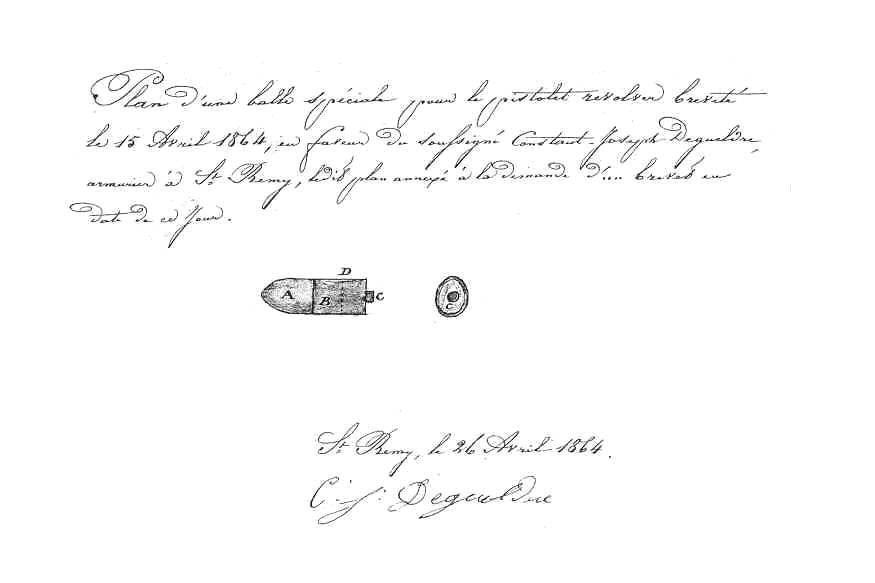
Patent 16732
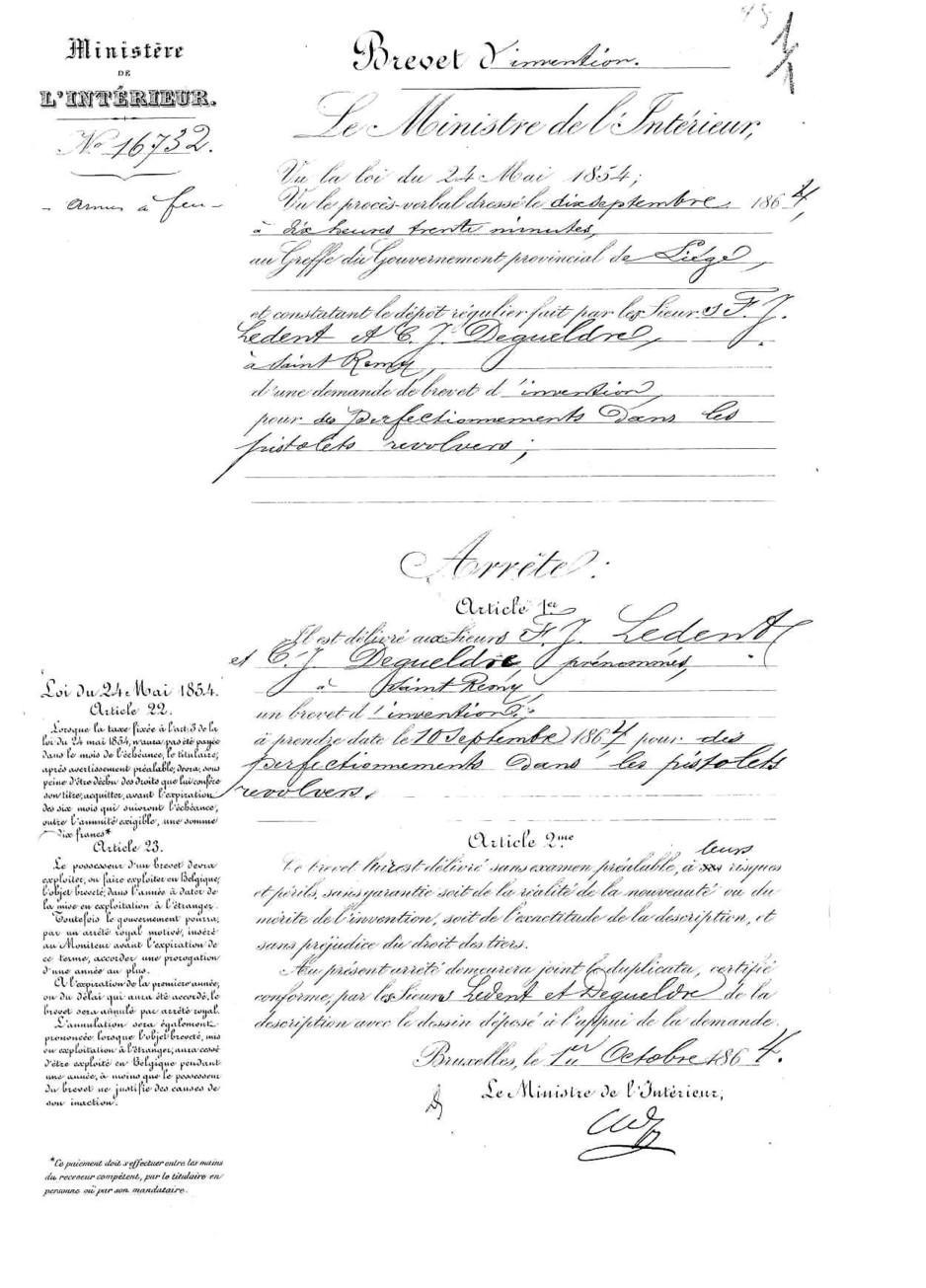
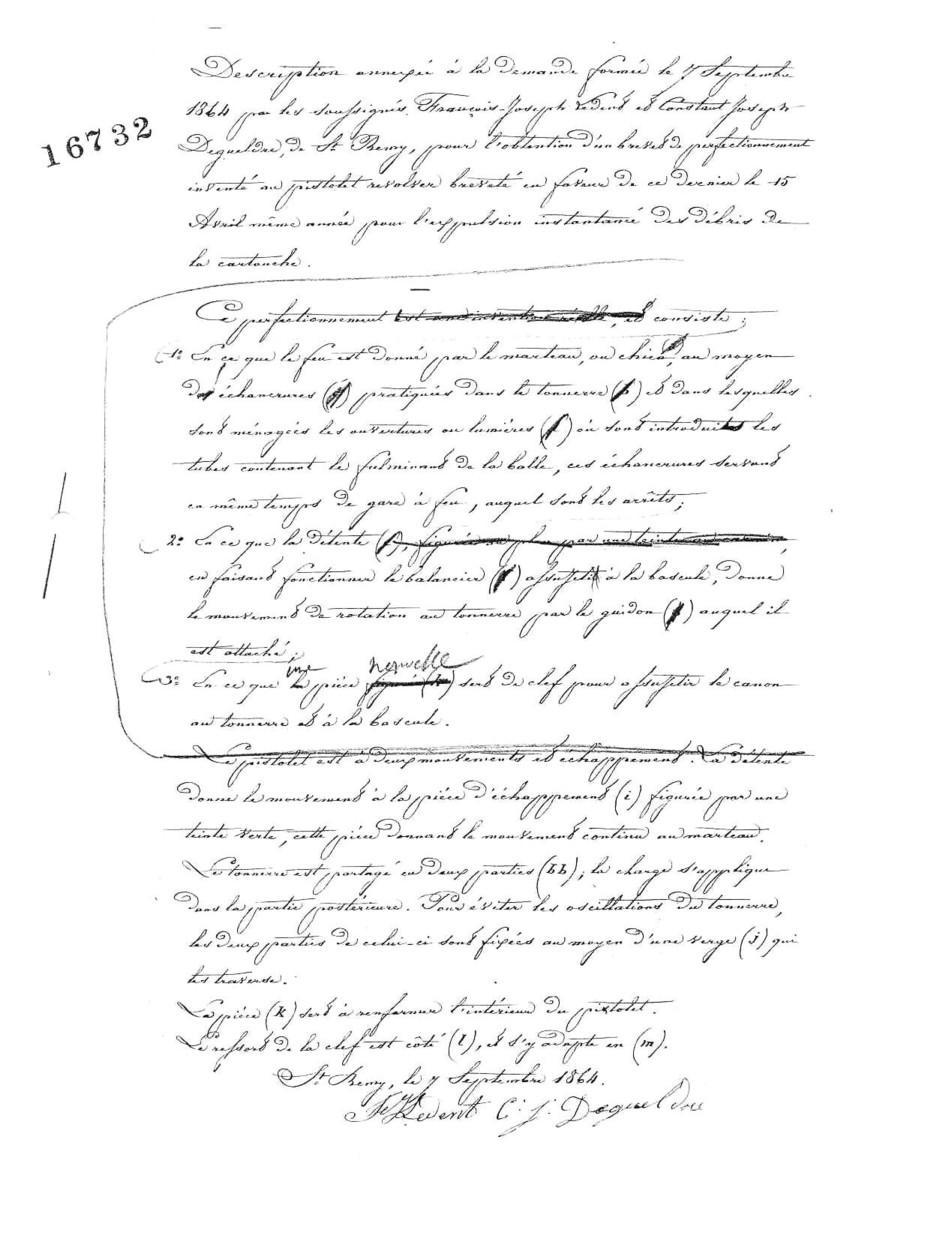
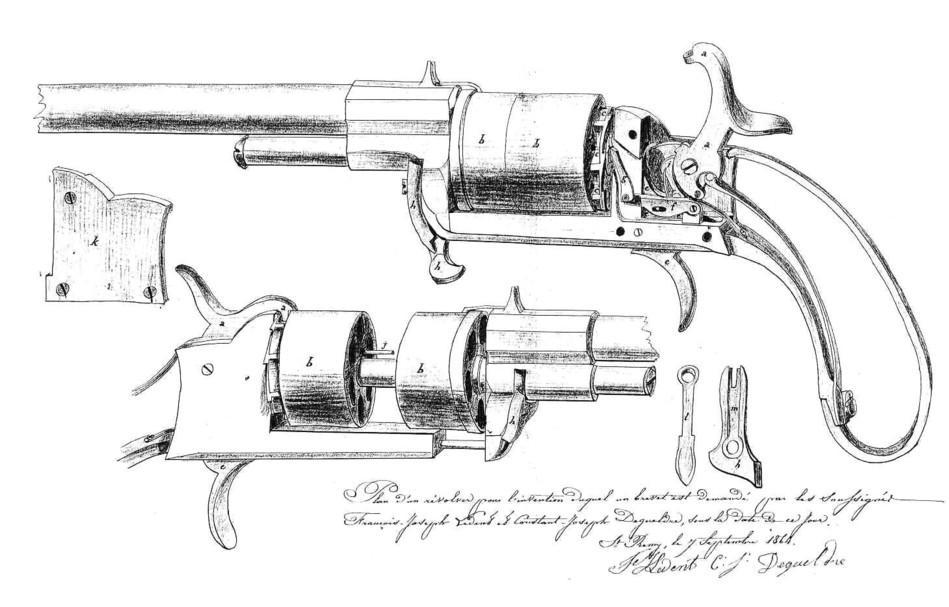
Degueldre C.J.
DEGUELDRE C.J (Jan. 11, 1825- Apr. 18, 1899) St Remy-Liege.
Patentee of 3 personal patents and 6 others in collaboration with Ledent François Joseph.
A patent (#15950) for a device adapted to revolvers for instantaneous expulsion of fragments of the cartridge and cap, registered on April 15, 1864, to come into effect on March 30, 1864.
A patent (#16093) for a bullet for revolvers, registered on May 15, 1864, to come into effect on April 26, 1864.
A patent (#63770) for a double locking revolver system , registered on January 31, 1884.
System DEGUELDRE REVOLVER, Ca. 1865 from the name of its inventor Constant Joseph DEGUELDRE, gunsmith in St Remy (Province of Liege).
6 shot-12mm Pinfire- Single and double action.
Revolver with a sliding barrel and a cylinder with an extractor. The cylinder is encircled in front of the cartridges pins by a ring attached to the frame. When the cylinder is pushed forward using the articulated lever located under the barrel, the pins are retained by this ring thus ejecting the spent cartridges.
No stamps whatsoever. Black finish- Rifled bore.
Probably a prototype. Jean-René Clergeau, in Gazette des Armes No 199, describes a simpler specimen, with a brass lever, stamped ''DEGUELDRE Brevete '' on the right side of barrel, with Liege proof stamp-145mm Barrel.
This modification is found again in a patent registered by Ledent & Degueldre on 22/7/1866 under # 19912 '' for a rocker usable with the Lefaucheux revolver to throw out the cartridge fragments.
HPH
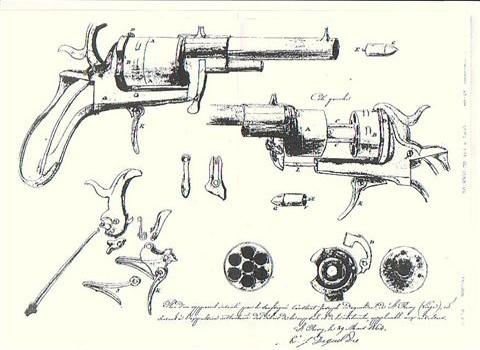
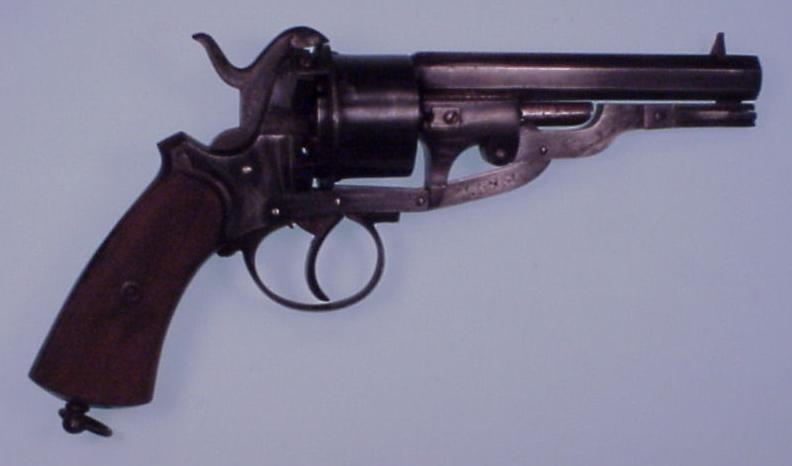
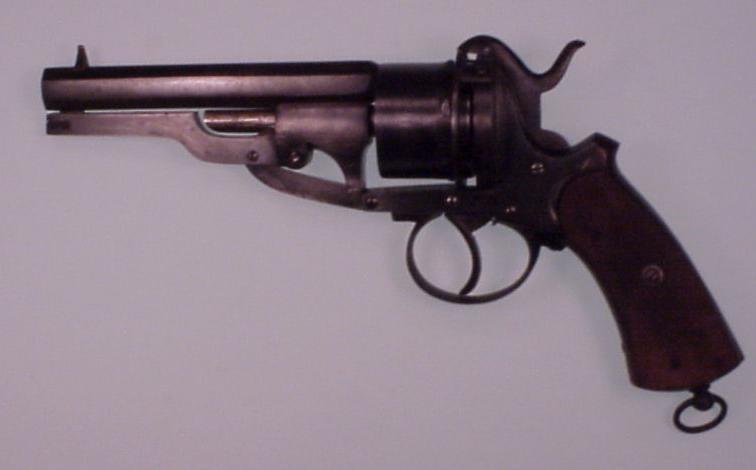
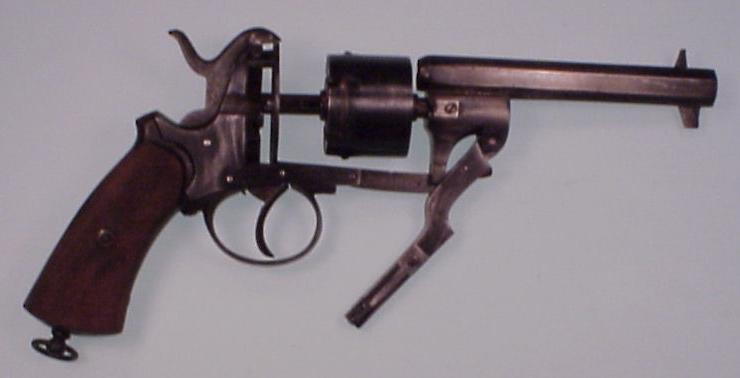
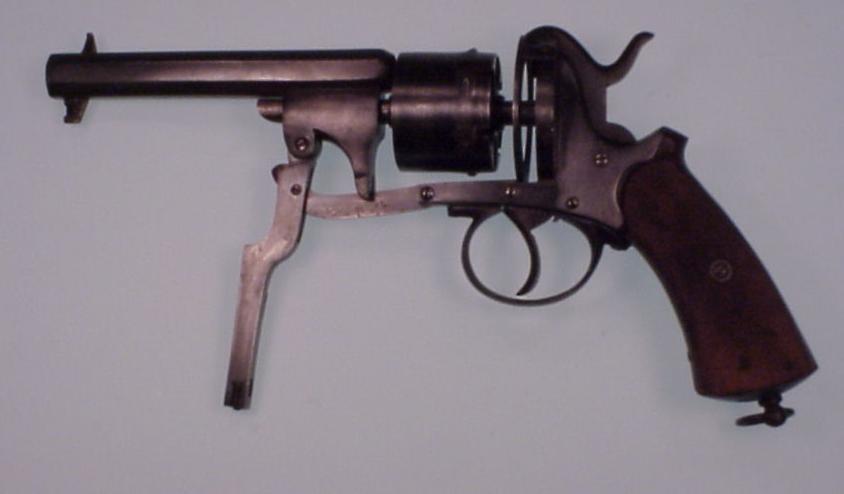
You can see below another specimen of the same type, with a steel lever, also bearing on the base of the 6 '' octagonal barrel the marking "Degueldre breveté" , the Liege Proof House stamp at he back the back of cylinder and a British proof stamp on every chamber.
On the left side of the barrel we can see a EL crowned logo.
HPH
Photographs friendly authorised by "Collectiblefirearms"
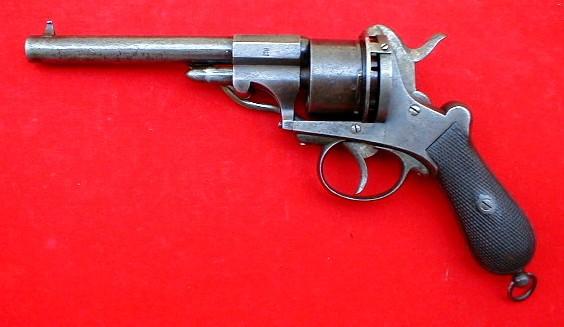
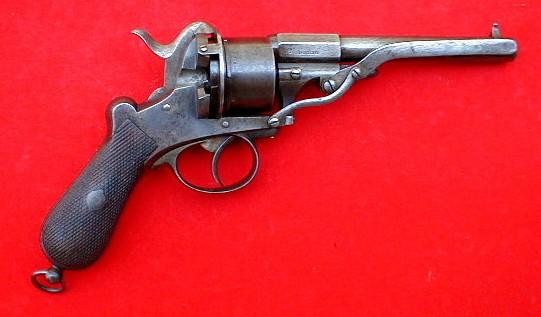
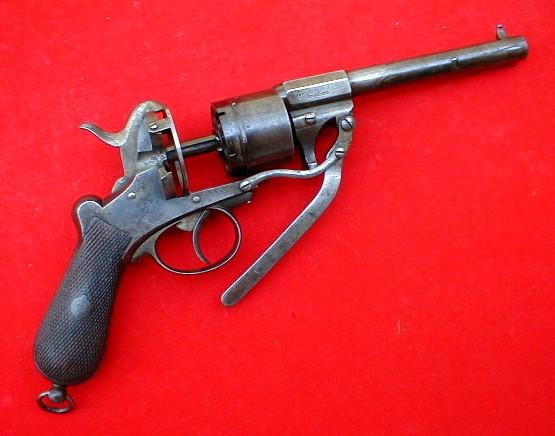
Degueldre 7mm pinfire.
If it is not single (?), this model is excessively rare in this caliber. Indeed, we know 2 weapons in this form which I described as "prototypes" in the article published in the review "the Museum of Weapons" n° 107-108 of December 2004. Both in 12 mm with pin. That of the Museum is of nickelled completion and that of my collection is bronzed black.
To "artisan" manufacture, one belongs in addition to the length different from the guns, a trigger guard broader and located ahead on the specimen of the Museum of Weapon of Liege, a squaring different from the grips; the gun is striped and a light squaring on the tail of the hammer on the specimen of the author and non-existent on the other whose gun is smooth.
No Belgian marking (punches of test or control) is reproduced on these 3 weapons.

The presence on the 7 mm of punches of English test (Birmingham) does not make it possible to cancel a Liège manufacture because, indeed, except error of my share, all the imported weapons were tested once again in England.
The manufacturer: of his collaboration with LEDENT François Joseph, manufacturer of Saint-Remy weapons, with whom it deposit, between 1864 and 1870, 6 patents or improvement, one can suppose that it is Ledent which assembled Degueldre "of the 1st type".
It should be known that at that time in Liege (about 1860-1880), NO firm manufactured a weapon in its totality, the "manufacturers" (* 174 listed in 1884) were actually assemblers which ordered with the many craftsmen available (* 11.204 people listed in 1880 in the sector of the firearms other than the women and of the children, casual workers), the various parts necessary (carcass, gun, barrel, stem of extraction, trigger, plates...) for such or such type of weapons and these parts were often made "at home" by families specialized in the production of only one component.
The inventors conceded readily with one or more manufacturers, in exchange of "royalties" the manufacture of the weapon resulting from their imagination, in the same way, if the orders were important, the manufacturers sub-contracted a share of their production or constituted themselves in "trade union" to face the request (thus was born the F.N.).
But let us return to this revolver in 7 mm to pin which presents the three innovations that one can allot to Degueldre: a system of lever allowing the projection of the block barrel-cylinder, a collective extractor made up of a steel circle surrounding the barrel, with the limit of the notches necessary to the exit of the pins, fixed at the shield and the small lever at spring, installed in this shield, which is erased under the pressure exerted by the introduction of a cartridge and is positioned back on the base, very preventing left inopportune.
There be no BELGIAN patent (1) concerning these innovation and yet one find on the version "simplify" of Degueldre (see photo more low in this heading) which have be marketing and A seem it known a success relative, the marking "Degueldre patent" (2).
The principal differences are as follows:
The lever which is used to advance the cylinder-barrel unit is decentred and simplified and is located on the right side of the weapon, it fixes itself at before right of the barrel, but the functionality remains identical.
The handle is round, in the pear shape, and narrower with also a ring of cap. The barrel, with eight sides, at the base, becomes circular starting from the quarter its length (145 mm), which was increased of almost 20 mm.
On these weapons are reproduced the punch test of Liege - ELG on star in an oval and usual punches of control - crowned Letter.
One also notes on the illustrated weapon the presence of marks of British test at various places. Logo EL crowned being reproduced on the left side of the gun is perhaps that of Emile Lepage, manufacturer
of weapons in Liege of 1850 to 1872.
Hausoul Ph (HPH)
(1) Whereas Constant-Joseph Degueldre is patentee three deposited in Belgium, on a purely individual basis.
(2) If a reader of this article were informed of a patent deposited in the name of Degueldre concerning this type of weapon in another country (England, France, Switzerland...), I would be grateful to him of me to make share of it.
* according to C GAIER, Cinq Siècles d’Armurerie Liégeoises – Editions du Perron 1996
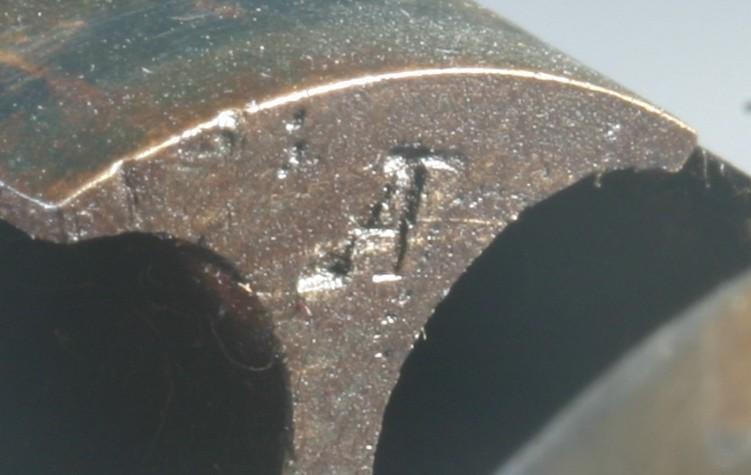
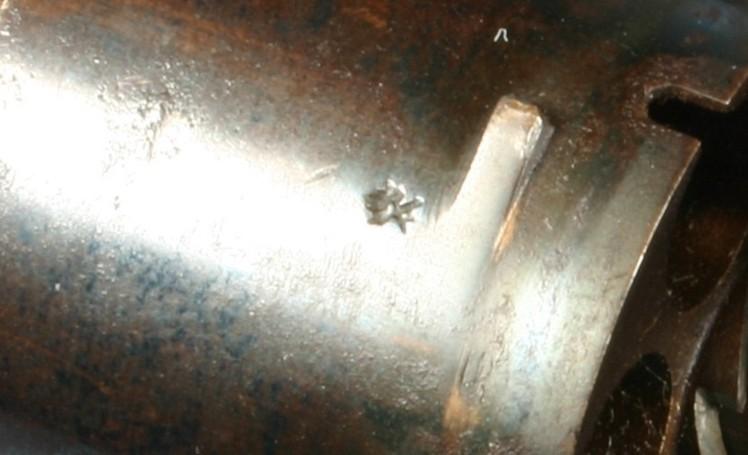
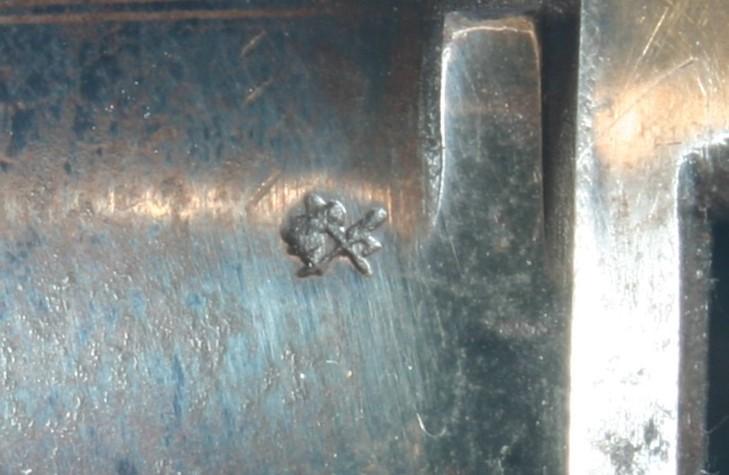
Comparison between Degueldre and Galand
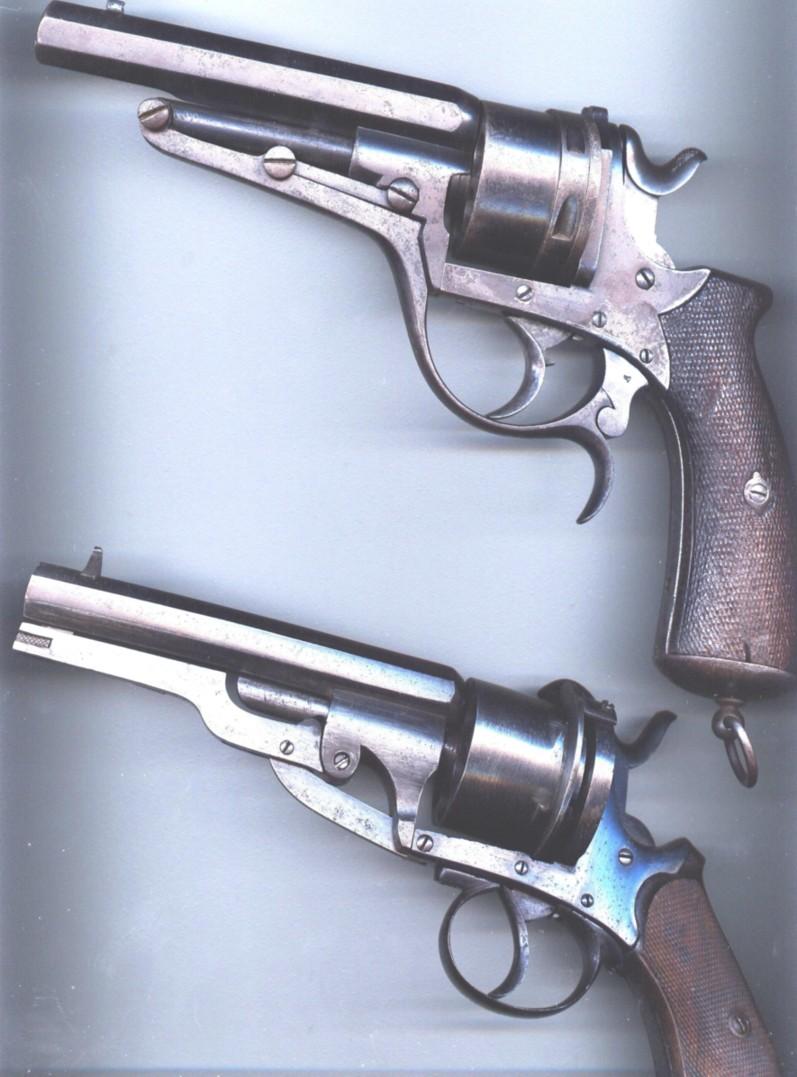
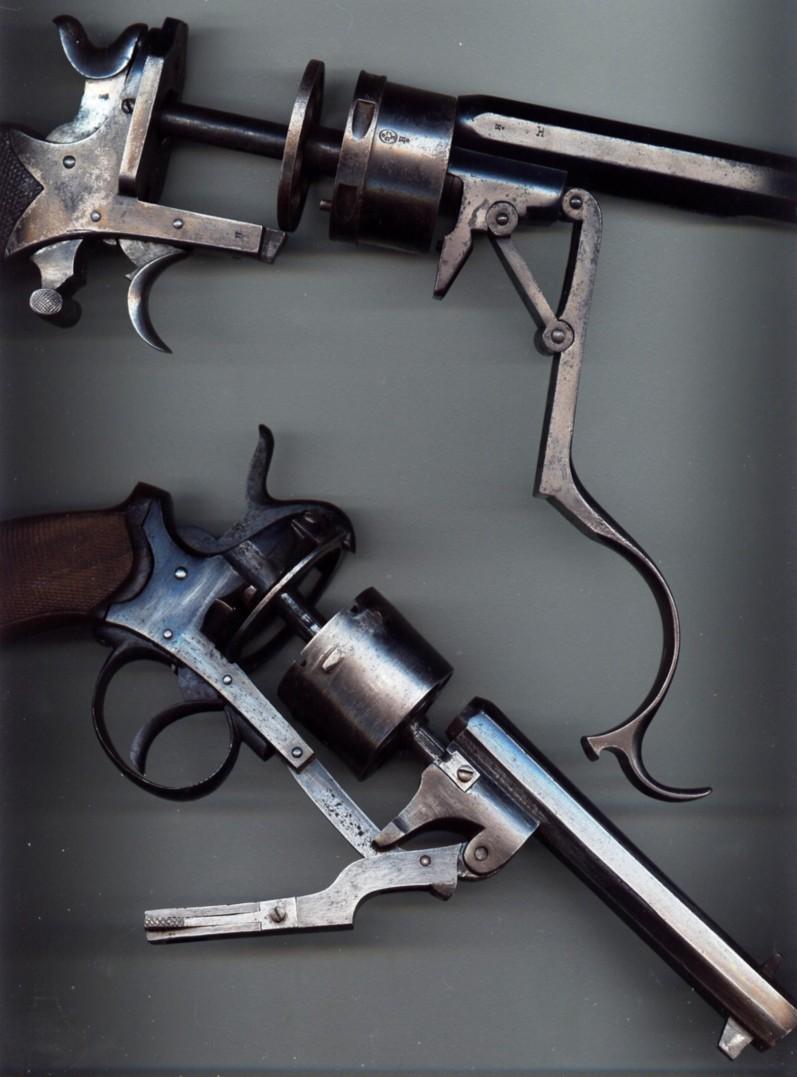
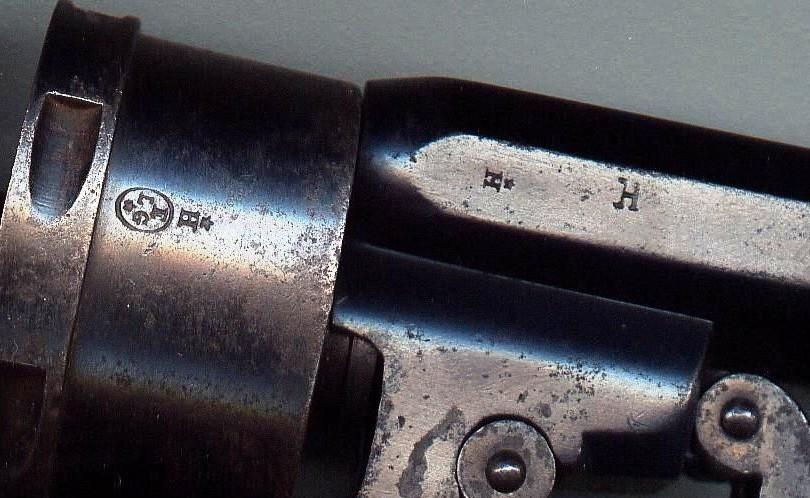
The Degueldre of the Museum of weapon of Liège and this one of the author
